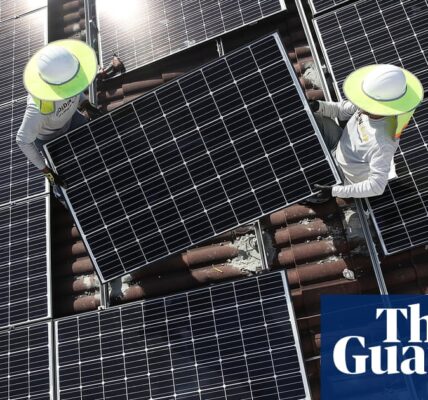
After months of deluge it seems incomprehensible that the UK could face water shortages in the event of a hot and dry spring and summer.
With an increasing population, a trend of “all or nothing” rain caused by climate breakdown and a lack of investment in infrastructure, we do not keep the water that falls on our island, but let it wash out to sea.
Drier countries must look on in disbelief as this rainy isle lets the ever more precious resource flow down rivers and out of the country, leading to hosepipe bans and potentially more dire consequences in the summer. Here are some major reasons:
Climate
Before the impacts of climate breakdown became painfully apparent, the UK was a country that could rely on rainfall year-round. Why bother investing in water storage in a perpetually soggy country? In recent decades, this excuse has held less water as the trends have become clearer.
Jamie Hannaford, a hydrologist at the UK Centre for Ecology & Hydrology, says water shortages are frequently coming after floods: “Summer 2022 was an exceptional drought event, which closely followed another major drought in summer 2018. It is worth noting that the intervening period saw exceptional flooding in 2019-2020 and further flooding in early 2021.
“Moreover, while relatively dry conditions continued in some areas into early 2023 following the 2022 drought, the period since mid-2023 to present has been very wet across most areas of the UK and the last autumn and winter has seen exceptional flooding. Recent years have therefore seen a pattern of hydrological ‘volatility’.
“In fact, much of the post-2000 period has been marked by such volatility, with episodes of sustained flooding and droughts, some of which have extended the range of hydrological variability we see in the UK.”
Rivers
Before the ascent of the railway, the UK used canals for goods and transport. The golden age of the canal was between the 1770s and the 1830s. This meant that the naturally wiggly rivers, through which water flowed slowly, were straightened and deepened for ease of transport. Meandering streams were turned into major channels, and water flows more quickly through a deep, straight river than a wiggly one spreading out over the landscape. This has implications for flooding, as water rushes from the uplands quickly to towns and villages below, and also for water capacity, as rather than being retained in rivers and wetlands it goes quickly out to sea.
Soil
We have drained our wetlands, such as the Somerset Levels, for housing and agriculture, and these used to hold a large amount of water. Over the centuries, the land has been parched to make it easier to farm and build. Agricultural land is mainly designed so any water that falls runs off into the surrounding aforementioned straightened rivers, where it is removed from the land and sluiced out to sea. The way we farm is preventing soil from holding water, too, as intensive farming of the soil strips it of its organisms and nutrients. This means instead of acting like a sponge, it is more sandy, so water falls through it and sluices off the drained land into the rivers. It also means that farmers need to abstract more water when it is dry, as they have not held it on their farms, whether that is in streams, wetlands or in the soil.
Reservoirs
Why not dig some massive reservoirs to catch all of the water that falls in autumn and winter? Good question. It has been 30 years since the last major reservoir was built in the UK – which means there has not been one since privatisation.
Some argue that there is little incentive to invest in infrastructure such as reservoirs when a private company is trying to give as much money to shareholders as possible. England is one of the few countries in the world where water is fully owned by private companies.
Water companies point to the Kafkaesque planning system and MPs who campaign ferociously about any planned infrastructure in their constituencies. Reservoir plans have been delayed or scrapped due to the political difficulties of building infrastructure in this country.
In the Environment Agency’s plans, the companies commit to build seven major reservoirs between now and 2050 but many think that is not adequate.
Leaks
It is common during the baking summer months to see a geyser spouting from the road, sending gallons of water gushing down the drain due to a burst pipe. It sticks in the craw when one has been told to cut down on water use or banned from watering the garden.
Pipes leak about a trillion litres of water a year; once again this problem is the result of a lack of investment. Many pipes are Victorian and the rate of replacing them is so slow it would take 2,000 years to get them up to scratch at the current rate of repairs.
Usage
While it is imperative the government and water companies secure water supply for the future by tackling the above problems, the public has a part to play, too. The average person in the UK uses 150 litres a day. This is more than many European countries, including France, where the average is 128, Spain (130), and Germany (122). Using water butts and having toilet systems that do not use fresh tap water are ways that homes could use water more sustainably. Water UK, the body representing the water industry, says most British people shower for seven or eight minutes a day, and has called for people to shorten their showers by a couple of minutes.
Source: theguardian.com




